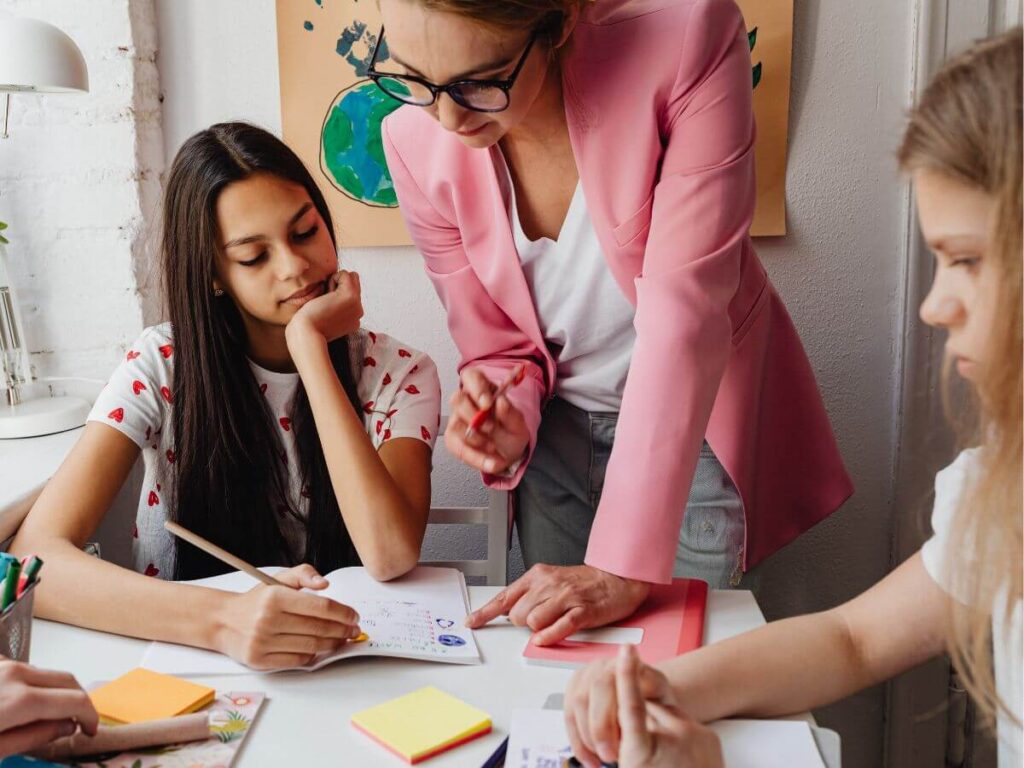Discover the comprehensive Big 8 engagement strategies that transform classroom dynamics and boost student participation! These proven teaching methods help educators create an interactive learning environment while ensuring effective knowledge retention. Learn how to implement these practical strategies to enhance your teaching effectiveness and student engagement levels immediately.

Why Is Student Interaction Strategy Essential for Effective Teaching?
In today’s era, attracting student interaction is a key factor in improving teaching effectiveness. Interaction not only increases interest but also helps students retain knowledge for a long time and develop self-study skills.
- Create the most comfortable learning environment and spirit
- Reduce stress in the classroom for students
- Understand and be closer to students
- Change and update methods continuously to suit the development era
Explore More Teaching Tips: What Are the 4 C’s of Lesson Planning? A Complete Teacher’s Guide
What Are the 8 Proven Student Engagement Strategies That Drive Results?

Strategy 1: Implement Project-Based Learning and Personal Models in Your Classroom
The project method allows students to participate in specific tasks such as research, design, or product practice. Through this, students not only apply theory but also develop problem-solving skills and creative thinking.
- Teachers can assign projects related to the lesson, such as building models, designing posters, or planning small businesses.
- Individual projects should be tailored to each student’s abilities.
Strategy 2: Identify and Enhance Individual Student Strengths Effectively
Teachers need to observe and assess to identify each student’s strengths, thereby providing appropriate learning methods.
- For example, students who are strong in communication can take on the role of presenting, while students who are good at practical skills can be assigned to design or assemble.
- For example, a student who is good at art can be assigned to draw or edit videos in a group project.
Strategy 3: Foster Peer-to-Peer Learning Engagement
Exchanging ideas with friends makes students feel more comfortable than communicating with teachers. This also builds teamwork and social skills.
- Divide the class into small groups to discuss, do exercises, or carry out group projects.
- Activities such as debate, peer teaching, or learning games help students interact more actively.
Strategy 4: Integrate Real-World Applications Into Your Lessons
Teachers can choose real-life situations to illustrate the lesson, such as: discussing financial problems based on managing family expenses. These situations help students see the practical meaning of the lesson.
Or alternatively, teachers can design lessons related to daily life, such as using mathematics to manage personal finances, students interviewing adults in the family to learn about history, or applying science to practical experiments.
Strategy 5: Track and Improve Academic Performance
Students often tend to compare themselves with their friends, leading to feelings of inferiority or illusions about their abilities. Encouraging students to be aware of their abilities helps reduce stress and set realistic and achievable learning goals.
- Teachers should organize small tests or feedback assessments.
- Emphasize that understanding one’s strengths and weaknesses is the first step to development.
- Use Differentiated Instruction to personalize each student’s learning path.
Strategy 6: Which Educational Tools and Technologies Boost Student Engagement?
Integrating technology into teaching helps create new and vibrant learning experiences. Tools like Kahoot, Google Classroom, or virtual reality simulation software can turn boring lessons into opportunities for discovery. In addition, using online feedback tools also helps students participate more actively in the lesson.
Strategy 7: How to Leverage Expert Influence to Enhance Student Learning
Inviting famous experts or guests in the field related to the lesson will help increase the attractiveness and practicality of the lesson. This not only encourages students to participate but also expands their awareness of the field they are studying.
Strategy 8: When and How to Use Storytelling to Inspire Student Engagement
Storytelling is an effective way to attract attention and create emotional connections with students. Stories of success or failure from real life will help students realize the lesson more deeply and remember it more easily. In particular, stories related to the lesson will arouse students’ interest in learning.
Discover Related Guides: What Are 5 Components of a Good Early Learning Environment?
What Are the Key Requirements for Implementing High-Impact Student Engagement Strategies?

Applying strategies to attract interactions from students requires careful preparation and meeting specific conditions:
- Facilities: Classrooms need to be fully equipped with documents, learning support devices such as projectors, computers, or modern learning tools (e.g. smart boards, interactive software).
- Professional knowledge and skills: Teachers need to have a good grasp of teaching content as well as appropriate pedagogical methods,
- Appropriate difficulty: Content needs to be adjusted to suit the level of students, avoiding situations that are too difficult or too easy to cause a loss of interest.
- Ability to use technology: For strategies such as applying technology tools or project-based learning, teachers need to be proficient in tools and software such as Kahoot, Canva, or Google Classroom.
Discover Related Guides: What are the 4 A’s of lesson planning?
The above 8 engagement strategies to attract interaction all have a direct impact on student psychology, both increasing active participation and supporting personal development. To successfully apply strategies to attract interaction from students, a comprehensive learning environment is required, as careful preparation from teachers, and active participation from students.






